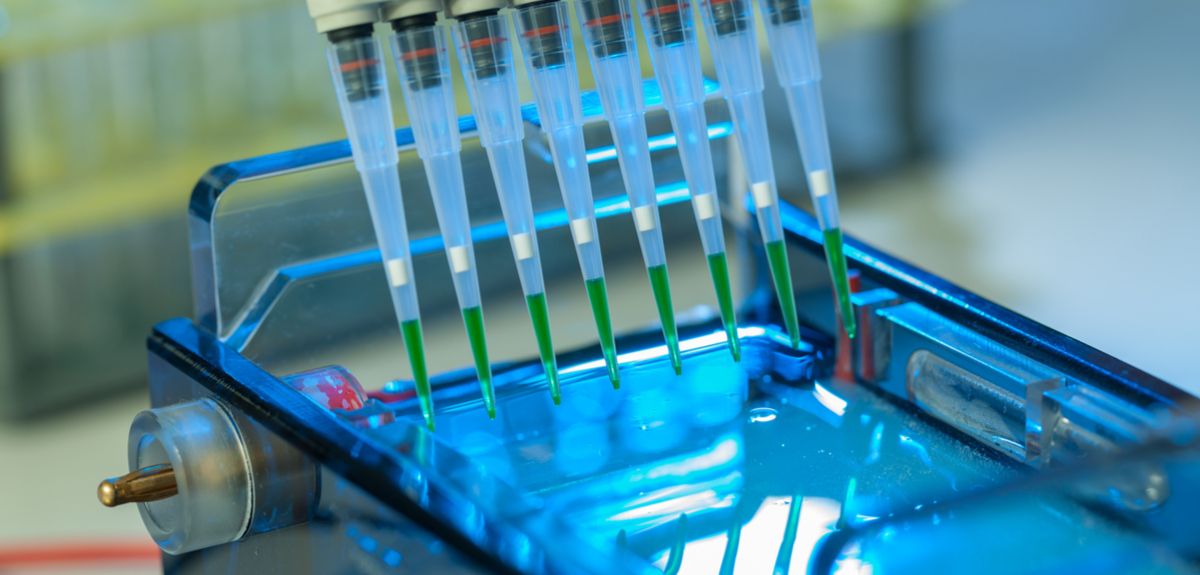
Image credit: Shutterstock
Cultural barriers to tackling the superbug crisis
Research led by the University of Oxford has revealed how the complex cultural and social environment in developing countries can complicate the use of new diagnostic technologies to fight the global superbug crisis.
The research, led by Dr Marco J Haenssgen at the CABDyN Complexity Centre and the Centre for Tropical Medicine and Global Health, involved a new finger-prick blood test (C-reactive protein) to help nurses and doctors decide whether their patients need antibiotic treatment.
The superbug crisis has arisen because microbes are becoming increasingly resistant to antibiotics and other antimicrobials. The severity of the problem has been described in a recent World Bank report entitled 'Drug-Resistant Infections: A Threat to Our Economic Future', which warns that the current trends of antimicrobial use can entail 'a reversal of the public-health gains of the past century, and the economic growth, development, and poverty reduction these gains enabled.'
Among the many contributing factors to drug resistance is the unnecessary use of antibiotics for illnesses that can be cured with other medicines or treatments. New funding is being provided to solve this problem, for examples with the Fleming Fund, the Wellcome Trust, and Nesta’s Longitude Prize, providing tens of millions of pounds to identify new diagnostic tests to help healthcare staff to end unnecessary antibiotic prescriptions.
Exploring cases in Yangon, Myanmar, and Chiang Rai, Thailand, the studies demonstrated that diagnostic tests for doctors and nurses cannot alone solve the problem of antibiotic over-prescription. The researchers found that healthcare staff generally trusted the new diagnostic technologies and used it to reassure themselves about their treatment decisions. Yet, patients’ lifestyles, cultural beliefs around illness and treatment, and the vast diversity of public, private, and unregulated healthcare providers were common barriers to accessing or correctly understanding the test.
Thai research team member Nutcha Charoenboon, said: 'Compared to its neighbours, Thailand is a few steps ahead in reducing antibiotic prescriptions. Healthcare workers (in our case nurses) cannot prescribe antibiotics easily because there is more and more monitoring of prescriptions on the health policy level. The test does help them to come down to the prescription limits. But there are also other factors that direct them away from the test results, for example when patients cannot afford to come back to the health centre for follow-up visits. Nurses would then rather over-prescribe antibiotics and knowingly contribute to the resistance problem than risk their patients’ lives. These social realities are what makes it tricky.'
Adding to this point, Yuzana Khine Zaw, a Burmese research team member and lead author of one of the articles, said: 'On the patient side, there are a whole lot of extra complexities, such as cultural ideas of how the body works. If people don’t think about illness in terms of bacteria and viruses, then it’s quite easy to mis-interpret the purpose of the diagnostic test.
'We saw a lot of patients who believed in it as a comprehensive blood test – not only a test to decide whether they should receive an antibiotic. This could lead to patients thinking they are ‘free of all disease’ when there is a negative result, although this may not be the case. Furthermore, many patients may not even receive the test due to poverty and time constraints. Rather than going to clinics where the test was offered, patients were more likely to buy the much cheaper assorted yet unlabelled medicine sets from grocery shops and pharmacies (so-called “medicine cocktails”) in order to feel better immediately or to avoid taking time off work.'
Lead researcher, Dr Marco J Haenssgen, said: 'This study actually reflects a lot of social research on new technologies in low- and middle-income countries. We can see how the local context affects the role of diagnostic tests, for instance in light of healthcare staff’s phenomenally wide range of tactics when they decide to prescribe or not to prescribe antibiotics. A new diagnostic test will therefore always interact with existing behaviours and solutions, which can make the test perhaps more, perhaps less effective than planned – depending on the context.'
The research involved interviews and group discussions with 92 nurses, doctors, and fever patients in Chiang Rai and Yangon. The research was part of a larger clinical trial to test the effectiveness of the C-reactive protein test on the primary care level, for which around 2,400 adults and children participated.
Professor Yoel Lubell, leader of the overall clinical trial based at the Mahidol-Oxford Tropical Medicine Research Unit, added: 'A medical intervention such as CRP-testing, while showing promise in the lab or in controlled environments could be used quite differently and have unintended consequences in real life settings. Social research should thus go hand-in-hand with clinical research to ensure that medical interventions introduced into routine care have the desired and intended positive impact.'
The studies can be read in Social Science & Medicine, and in The American Journal of Tropical Medicine and Hygiene.
 New study finds that stopping weight-loss drugs is linked to faster regain than ending diet programmes
New study finds that stopping weight-loss drugs is linked to faster regain than ending diet programmes
 Honorary degree recipients for the Chancellor’s ceremony announced
Honorary degree recipients for the Chancellor’s ceremony announced
 Expert Comment: The illegality of the US attack against Venezuela is beyond debate - how the world reacts is critical
Expert Comment: The illegality of the US attack against Venezuela is beyond debate - how the world reacts is critical